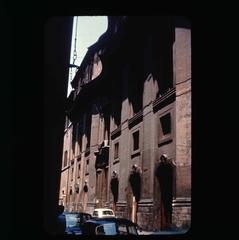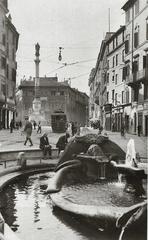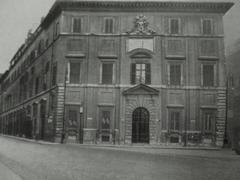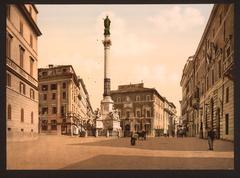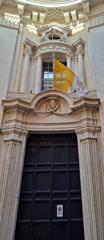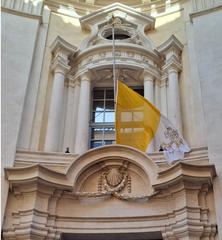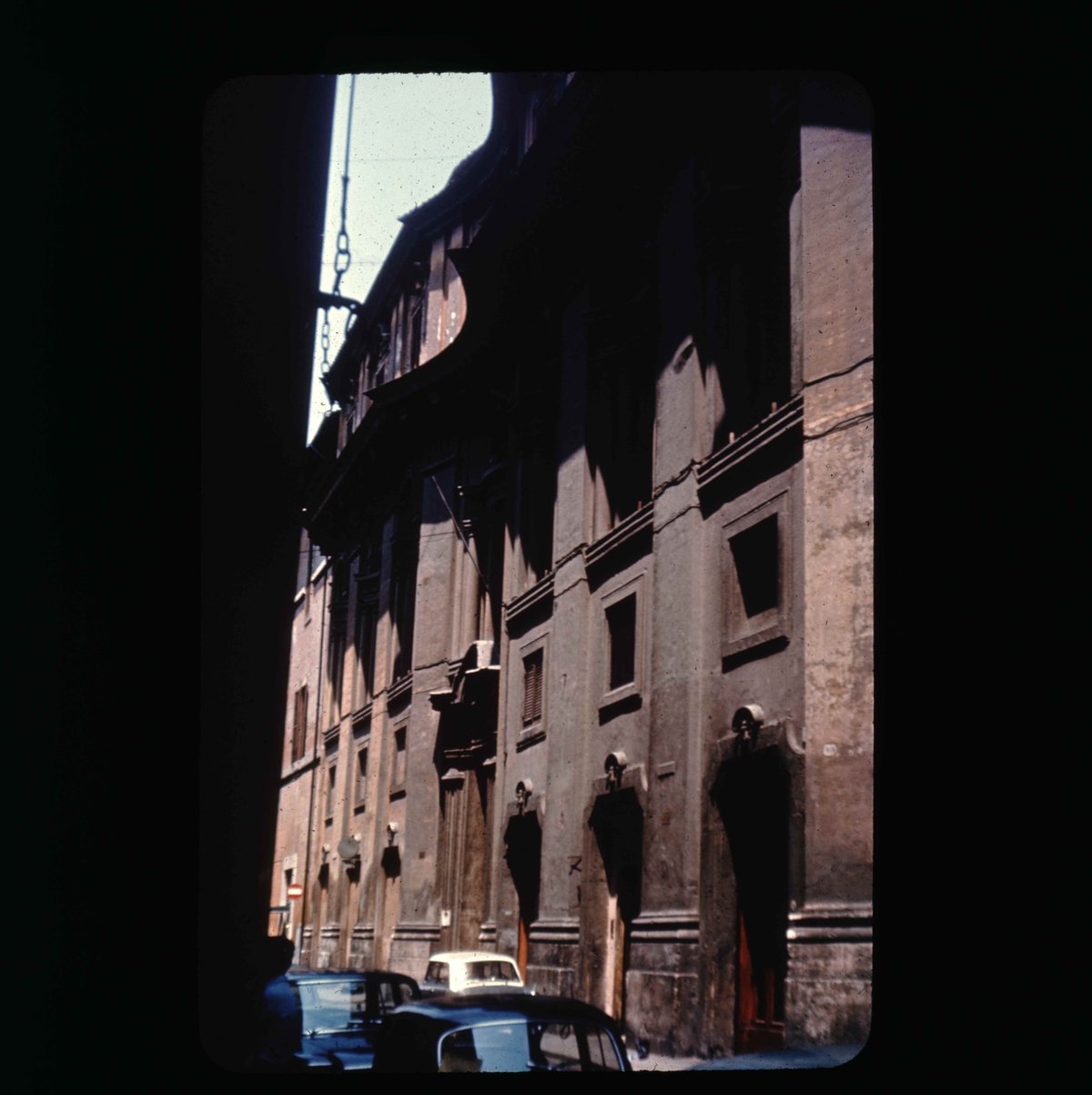
Palazzo di Propaganda Fide: Visiting Hours, Tickets, and Rome Historical Sites Guide
Date: 14/06/2025
Introduction
Nestled near Rome’s iconic Spanish Steps, the Palazzo di Propaganda Fide stands as a remarkable testament to Baroque architecture and the Catholic Church’s global missionary legacy. Established in the early 17th century as the headquarters for the Congregation for the Propagation of the Faith, this architectural masterpiece not only reflects centuries of ecclesiastical history but also showcases the creative genius of Gian Lorenzo Bernini and Francesco Borromini. The Palazzo’s evolution, function, and ongoing relevance make it a must-see for history buffs, architecture enthusiasts, and cultural travelers alike. This comprehensive guide details the history, architectural highlights, visiting hours, ticketing procedures, accessibility information, and travel tips to help you make the most of your visit to this extraordinary site.
Table of Contents
- Introduction
- Historical Background and Foundation
- Architectural Evolution
- Significance in Religious and Cultural History
- Artistic Highlights
- Notable Events and Historical Moments
- Visiting Palazzo di Propaganda Fide
- Frequently Asked Questions (FAQ)
- Conclusion
- References and Further Reading
Historical Background and Foundation
The Palazzo di Propaganda Fide traces its origins to 1622, when Pope Gregory XV established the Congregation for the Propagation of the Faith (Congregatio de Propaganda Fide) to coordinate Catholic missionary activity worldwide (Wikipedia). The need for a dedicated headquarters led to the acquisition of a property near Piazza di Spagna in 1626, strategically positioning the congregation at the heart of Rome (arsartisticadventureofmankind.wordpress.com). Over time, the building expanded to accommodate the growing needs of the Church’s missionary and educational work.
Architectural Evolution
Bernini’s Contributions
Gian Lorenzo Bernini, one of Baroque Rome’s leading architects, designed the original façade facing Piazza di Spagna around 1644. His design featured restrained classicism, with monumental pilasters and a balanced rhythm of windows, symbolizing the Church’s authority and unity (arsartisticadventureofmankind.wordpress.com). Bernini’s interior marble spiral staircase remains a highlight, demonstrating his mastery of dramatic spatial effects.
Borromini’s Transformations
In 1646, Francesco Borromini took over, introducing a dynamic and inventive Baroque style to the palace’s western façade on Via di Propaganda. Completed in 1662, Borromini’s design is characterized by undulating surfaces, intricate pilasters, and expressive forms that contrast sharply with Bernini’s classicism (rome-roma.net). The façade’s interplay of concave and convex elements, along with elaborate ornamentation, marks it as a high point in Roman Baroque architecture.
The Chapel of the Magi
Within the Palazzo, Borromini also redesigned the Chapel of the Magi (Chiesa dei Re Magi) between 1662 and 1666, replacing an earlier chapel by Bernini. The oval plan, abundant natural light, and restrained decoration create an atmosphere of spiritual illumination. The chapel also holds historical significance as the ordination site of John Henry Newman in 1847 (Catholic News Agency).
Significance in Religious and Cultural History
Palazzo di Propaganda Fide served as the operational hub for the Catholic Church’s global missionary activity. The congregation trained clergy, published catechisms and liturgical texts in numerous languages through its pioneering Polyglotta printing press, and played a central role in cultural and linguistic exchange (Wikipedia). The palace’s influence extended well beyond architecture, impacting the spread of Christianity, local church development, and cross-cultural engagement across continents (Catholic News Agency).
Artistic Highlights
The Palazzo houses a notable library with oriental manuscripts, Coptic parchments, and historic artifacts. Its church, the Chiesa dei Re Magi, is adorned with works by artists such as Carlo Pellegrini and Carlo Maratta (tesoridiroma.net). The harmonious blend of architecture and art in the palace and chapel exemplifies the Baroque ideal of engaging both the senses and the soul.
Notable Events and Historical Moments
- Papal Patronage and Expansion: Successive popes expanded and renovated the Palazzo to reflect the growing ambitions of the Catholic Church and the congregation’s increasing responsibilities.
- Age of Exploration: The Palazzo’s policies and missionary efforts significantly shaped the religious landscape of newly encountered territories during the 17th and 18th centuries.
- Modern Era: Today, the Palazzo remains the seat of the Vatican’s Dicastery for Evangelization and is recognized as a masterpiece of Baroque architecture (sg.trip.com).
Visiting Palazzo di Propaganda Fide
Visiting Hours and Tickets
As of June 2025, the Palazzo di Propaganda Fide is temporarily closed for urgent conservation and restoration work (Turismo Roma). Always check the official Turismo Roma website or authorized ticketing platforms for the latest updates on reopening dates, visiting hours, and guided tour availability.
When open, entry is typically by guided tour, which should be booked in advance, especially during high season (Trip.com). Ticket prices and schedules may vary; discounts are often available for students, seniors, and groups.
Accessibility
The Palazzo is located near the Spagna Metro station and is accessible by public transportation. While efforts have been made to accommodate visitors with mobility challenges, some historic areas may have limited accessibility. For detailed information, consult the Roma Accessibile portal or contact the venue in advance.
Guided Tours and Special Events
Guided tours—offered in multiple languages—provide in-depth insights into the building’s architecture, history, and artistic treasures. The tours often include access to the Chapel of the Magi and other areas not generally open to the public. Special exhibitions or concerts are occasionally held; consult the official website for current events.
Getting There and Nearby Attractions
Located at Piazza di Spagna, the Palazzo is easily reached by foot, metro (Spagna station, Line A), or bus. Combine your visit with nearby attractions such as the Spanish Steps, Trinità dei Monti, the Keats-Shelley House, and the Church of Sant’Andrea delle Fratte for a full cultural experience.
Photographic Spots
The dual façades by Bernini and Borromini are popular with photographers for their contrasting styles. Early morning or late afternoon offers the best natural light for capturing the building’s sculptural details.
Frequently Asked Questions (FAQ)
Q: What are the current Palazzo di Propaganda Fide visiting hours?
A: The Palazzo is temporarily closed for restoration as of June 2025. Check the official Turismo Roma website for reopening updates.
Q: Are tickets required to visit the Palazzo?
A: Yes, guided tours require tickets, typically booked in advance. Check official sources for details.
Q: Is the Palazzo accessible to visitors with disabilities?
A: Accessible entrances and facilities are available for most areas, but some historic spaces may be challenging. See Roma Accessibile for specifics.
Q: Can I take photographs inside the Palazzo?
A: Photography is allowed in most public areas but without flash; always check with staff or posted signs.
Q: Is the Oratory of the Magi included in tours?
A: Yes, guided tours usually include access to the Oratory.
Conclusion
The Palazzo di Propaganda Fide is a cornerstone of Rome’s Baroque heritage and a living symbol of the Catholic Church’s global mission. Its dual façades, stunning interiors, and enduring legacy offer a unique window into the creative and spiritual energy of 17th-century Rome. While visiting currently requires careful planning due to restoration closures and limited public access, the experience is profoundly rewarding for those passionate about art, history, and cultural dialogue. For a seamless visit, stay updated through official channels, book tickets in advance, and enrich your journey by exploring nearby historical sites and using multimedia guides like the Audiala app.
References and Further Reading
- Palazzo di Propaganda Fide Visiting Hours, Tickets, and History | Rome Historical Sites
- Palazzo di Propaganda Fide in Rome: Architectural Marvel, Artistic Treasure, and Visitor Guide
- Congregation for the Evangelization of Peoples (Wikipedia)
- Turismo Roma - Palazzo di Propaganda Fide
- Catholic News Agency - Vatican Founded Propaganda Fide
- Palazzo di Propaganda Fide: Rome’s Iconic Missionary Palace
- Trip.com - Palazzo di Propaganda Fide Rome
Images are optimized with descriptive alt text for accessibility and SEO. For virtual tours, maps, updated visiting hours, and official announcements, consult the provided links.
